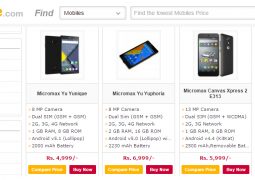The Essential Guide for Getting the Most out of your Shopping
by June 17, 2014 3,179 views0
The next time you are back from a shopping trip think whether you’ve optimized your shopping experience and derived the fullest value from it. Here, we are looking at shopping from the perspective of the buyer who’s shelling out money to buy products or services. It is of paramount importance, therefore, that the money spent delivers the maximum value to this buyer.
Getting the most out of your shopping isn’t easy and needs a well-planned approach defined by a clear understanding of what you need (not necessarily what you wish to buy), predetermining a budget that will help you satisfy these needs, shopping, and sticking to the budget when you shop.
This is why you need to adopt a well thought out strategy to tackle shopping. You need to prepare grounds for the right kind of experience and make it work for you. Let’s see how that can happen.
1. Identify your needs
The question, “what do you want to buy?” is not as simple as it seems. If its groceries that you are planning to shop for, you quite probably are running out of groceries, but you then need to put a figure on the number of items you want to buy. For e.g. if you’ve run out of coffee you need to work out how much coffee you need and how long do you want it to last. On the other hand, if you want to buy vegetables, you need to buy just enough vegetables that will see you through the week. You don’t want to buy too much or too little.
This thinking stands irrespective of the product you want to buy, whether its groceries, clothes, electronics etc.
2. The Family Brainstorm
This point doesn’t come into the picture if you’re living alone. But, if you’ve a family make sure you make them a part of your shopping strategy. Take the opinion of your family before you buy a product. Discuss and only then work out whether you actually want to buy a product. Such brainstorming sessions will help you focus on your needs and ensure you make the right decisions. What you are doing is getting your needs vetted by people who know you. This way there is very little chance of going wrong.
3. Preparing a List and Budget
The key to some great shopping is less about the products you buy and more about whether you were able to stick to your budget while buying the products you wanted. So, the first thing you must do is prepare a list of products you want to buy. This needs to be a detailed list that has names of the items to be bought, their quantity and if possible the name of the brand.
Once you’ve worked out a list, work out the amount you wish to earmark for this purchase. If you’re already in the habit of budgeting, you will have a fair idea of how much you can spend. If not, you will need to work from the ground up. It all begins with your salary, identifying the fixed expenses, making the monthly investments you’re already making, setting aside the amount reserved for monthly savings and finally working out your budget. This can include your monthly grocery expense or the monthly installments you can afford to buy a big ticket electronic item, or budget for clothes purchase.
How to Create a Grocery Budget is a nice read if you want to understand the ins and outs of creating a budget. Although this one focuses on a grocery budget, it does give you an idea of how to go about preparing a budget.
4. Shopping
This is the make or break stage for your shopping experience. Once you know your budget, the question to ask yourself is this – Do I buy from an online store or a brick and mortar store? There are advantages to be had if you go for either options but the online route presents a great money saving opportunity. Most online merchants offer product discounts and some of these discounts are more than their in-store counterparts.
The choice is yours. If you take the online route, stop first at a price comparison site or two to find out which online retailer is selling the products you want at the cheapest price. There is also a link that will take you to the seller’s product page if you do decide to shop from a particular seller.
This makes it easier for you to buy a product at cheap prices on the internet.
But what if you want to stick to physical shopping and buy from brick and mortar stores. In this case, if its grocers a departmental store is the ideal choice. But if you want to buy branded clothes, electronics etc., it’s important you visit different stores to find out which store is selling the product at a price that falls within your budget.
5. Sticking to a Budget
Impulse purchases will kill your budget. The problem with shopping is there are plenty of distractions that can lure you away from your main goal. For e.g. if you are planning to buy a laptop, you might be lured into buy a ton of accessories that you had no intention of buying; if you are planning to buy a pair of jeans, the salesperson might just convince you to buy a nice T-shirt that suits you to the T. The idea is to control yourself and stick to your budget.
But, if you find you’ve made some great purchases that cost less than you thought they would, means you might be able to buy a few more items before you overshoot your budget.
There is a difference between enjoying your shopping purely on the brunt of the products you’ve purchased and having the satisfaction of buying products without going overboard with the budget. For my money, the latter is more satisfying; this is how you get the most out of your shopping experience.
Image Source: 1




